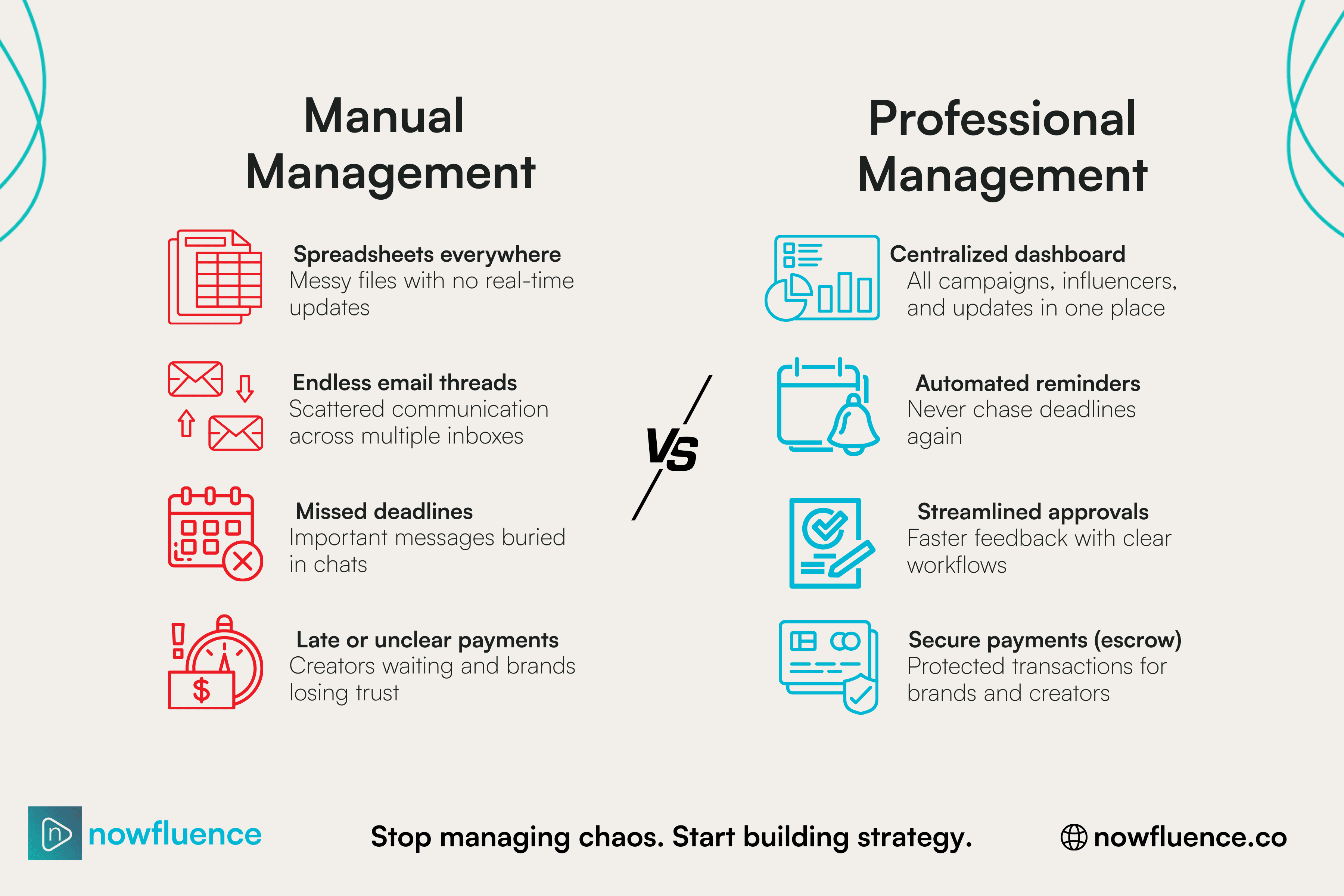From Spreadsheets to Strategy: Why Manual Influencer Management No Longer Works
Discover why manual influencer management with spreadsheets, emails, and DMs no longer works. Learn how influencer management software powers professional influencer marketing operations at scale.
September 01, 2025
For years, marketing teams have relied on spreadsheets, emails, and DMs to manage influencer campaigns. While these methods may work for one-off collaborations, they quickly collapse under the weight of larger, more complex programs. What once felt manageable becomes chaotic: chasing deliverables, updating messy sheets, and piecing together scattered communication.
The truth is simple. Manual workflows are no longer enough. Brands that want to scale influencer marketing need more than spreadsheets. They need structure, clarity, and automation.
The Hidden Cost of Manual Influencer Management
On the surface, managing influencer campaigns with emails and spreadsheets might look cheap and flexible. But in reality, it comes with hidden costs.
Lost time: Marketers spend hours chasing content updates, verifying deadlines, and following up with creators.
Errors and inconsistencies: A single wrong formula or outdated row can distort reporting for the entire campaign.
Poor collaboration: Information gets trapped across inboxes, chats, and documents, making it harder for teams to stay aligned.
Creator frustration: When communication is scattered, influencers often miss deadlines or feel disconnected from the brand.
These inefficiencies may not be obvious at first, but they create friction that limits campaign performance and prevents true growth.
Moving Toward Professional Influencer Marketing
To run campaigns at scale, brands need to operate with the same rigor as other marketing functions like paid media or CRM. This is where influencer management software becomes essential.
With the right tools, teams can:
Centralize communication: Every message, approval, and deliverable in one place.
Automate operations: Reminders, approvals, and payment flows happen without manual chasing.
Ensure accountability: Clear workflows and secure payment systems such as escrow protect both brand and influencer.
Unlock scalability: Instead of juggling five or ten influencers, teams can confidently manage fifty or even one hundred without chaos.
This shift marks the difference between ad hoc collaborations and professional influencer marketing.

Why Influencer Marketing Operations Matter
The most successful brands treat influencer marketing as a long-term growth channel rather than a series of disconnected posts. That requires structured influencer marketing operations with systems and processes that ensure campaigns run smoothly from start to finish.
When influencer marketing operations are in place, marketers can focus less on administrative tasks and more on strategy. This includes building relationships, experimenting with creative formats, and measuring ROI. The result is not only smoother workflows but also more impactful campaigns.
The Bottom Line
Spreadsheets and inboxes were never designed to manage complex influencer campaigns. As brands invest more in creator partnerships, they need tools that match the scale and professionalism of their ambitions.
By adopting influencer management software, marketing teams transform influencer marketing from a time-consuming hassle into a scalable and strategic growth engine.
The brands that will succeed in the future are not the ones stuck in spreadsheets. They are the ones that embrace professional influencer marketing today.
Want to discuss insights from this study? Reach out to our research team.